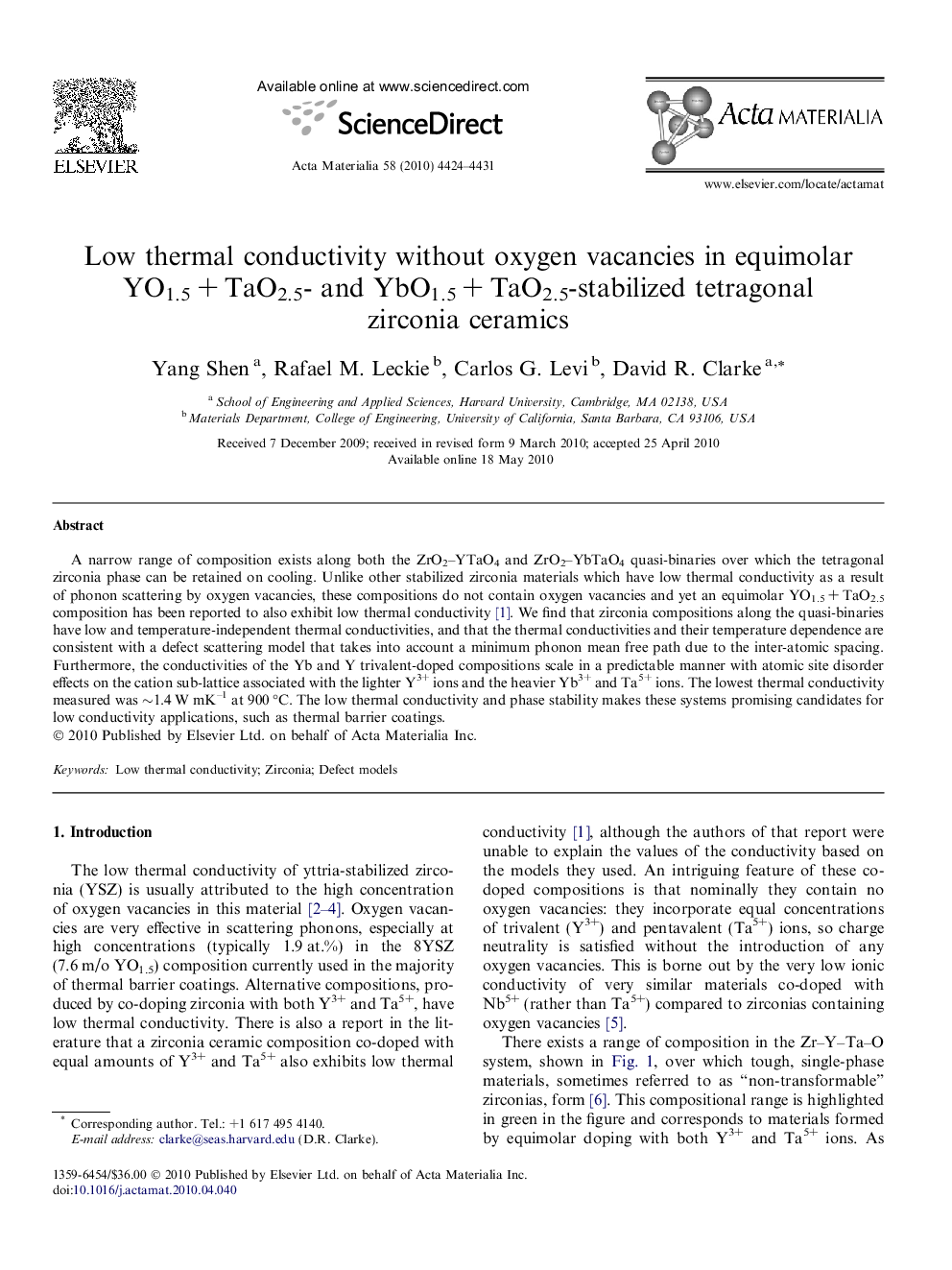| Article ID | Journal | Published Year | Pages | File Type |
|---|---|---|---|---|
| 1448571 | Acta Materialia | 2010 | 8 Pages |
A narrow range of composition exists along both the ZrO2–YTaO4 and ZrO2–YbTaO4 quasi-binaries over which the tetragonal zirconia phase can be retained on cooling. Unlike other stabilized zirconia materials which have low thermal conductivity as a result of phonon scattering by oxygen vacancies, these compositions do not contain oxygen vacancies and yet an equimolar YO1.5 + TaO2.5 composition has been reported to also exhibit low thermal conductivity [1]. We find that zirconia compositions along the quasi-binaries have low and temperature-independent thermal conductivities, and that the thermal conductivities and their temperature dependence are consistent with a defect scattering model that takes into account a minimum phonon mean free path due to the inter-atomic spacing. Furthermore, the conductivities of the Yb and Y trivalent-doped compositions scale in a predictable manner with atomic site disorder effects on the cation sub-lattice associated with the lighter Y3+ ions and the heavier Yb3+ and Ta5+ ions. The lowest thermal conductivity measured was ∼1.4 W mK–1 at 900 °C. The low thermal conductivity and phase stability makes these systems promising candidates for low conductivity applications, such as thermal barrier coatings.
